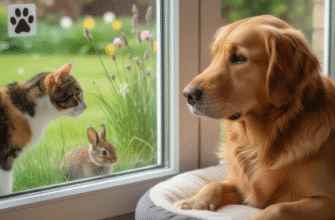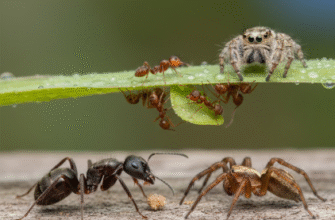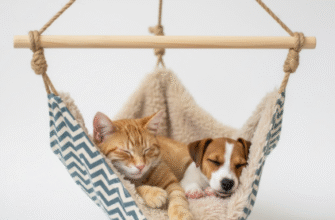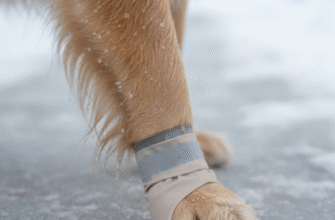Bringing a pet into your life is often pictured as endless cuddles and happy walks in the park. And while those moments certainly exist, the day-to-day reality involves a significant time commitment that’s easy to underestimate amidst the excitement. Before you welcome a furry, scaled, or feathered friend, it’s crucial to honestly assess how much time you can realistically dedicate each day. It’s not just about fitting them in; it’s about providing the attention and care they need to thrive.
Thinking about pet time often stops at the basics: quick potty breaks, filling the food bowl, maybe a short walk. But quality pet ownership goes far beyond mere survival needs. True commitment encompasses active engagement, training reinforcement, grooming routines, mental stimulation through play, and simply being present. Neglecting these aspects doesn’t just lead to a bored pet; it can result in behavioral problems, anxiety, and a less fulfilling relationship for everyone involved.
Deconstructing Daily Pet Time: More Than Just Food and Water
Let’s break down what “attention” truly means in the context of different pets. It’s a multifaceted concept:
Active Interaction: This is focused time spent directly engaging with your pet. Think playing fetch with your dog, dangling a feather wand for your cat, talking to your parrot, or handling your guinea pig. This is crucial for bonding, exercise, and mental stimulation.
Training and Mental Enrichment: Especially vital for intelligent animals like dogs, cats, and parrots. This includes formal training sessions (even just 5-10 minutes daily), puzzle toys, scent work for dogs, clicker training for cats, or teaching tricks to birds. It keeps their minds sharp and prevents boredom-related issues.
Physical Exercise: This varies hugely by species and breed. For many dogs, it means multiple walks or runs daily, plus playtime. For cats, it’s encouraging pouncing and climbing. Even smaller animals need opportunities for movement beyond their cage confines, supervised of course.
Grooming: Brushing, bathing (occasionally, depending on the pet), nail trimming, ear cleaning, dental care. Some pets require daily brushing (long-haired breeds), while others need less frequent but still regular attention.
Feeding Routine: While often quick, meal times can also be opportunities for training (making them sit before eating) or using slow-feeder bowls for mental work.
Health Monitoring and Care: Daily checks for any signs of illness or injury, administering medication if needed, cleaning habitats thoroughly (essential for small mammals, reptiles, and birds).
Passive Companionship: Sometimes, just being in the same room while you work or watch TV provides comfort and security for your pet. While not active engagement, their need for presence shouldn’t be discounted, especially for social animals like dogs.
Factors That Dramatically Shift the Time Equation
Not all pets are created equal when it comes to time demands. Several factors play a massive role:
Species Specifics
Dogs: Generally require the most significant daily time commitment due to exercise needs (walks, playtime), training, social interaction, and grooming. A dog left alone for 10-12 hours daily with only quick potty breaks is likely not living its best life.
Cats: Often perceived as low-maintenance, cats still need dedicated daily playtime to satisfy hunting instincts, grooming (especially long-haired breeds), litter box scooping (at least once daily, ideally twice), and affection on their terms. While more independent than dogs, they aren’t decorations.
Small Mammals (Hamsters, Gerbils, Guinea Pigs, Rabbits): Require daily feeding, water checks, spot cleaning of cages, and weekly deep cleans. They also need safe, supervised out-of-cage time for exercise and socialization. Rabbits and guinea pigs, being social, often do better in pairs, which doesn’t necessarily double the work but does require space and interaction monitoring.
Birds: Can be surprisingly time-intensive. Daily cage cleaning, fresh food and water are essential. Social interaction is critical, especially for parrots, who are highly intelligent and can develop behavioral issues if neglected. Many need significant out-of-cage time.
Reptiles and Amphibians: Time needs vary wildly. Some snakes eat infrequently, reducing daily tasks. However, maintaining specific temperature, humidity, and lighting gradients requires consistent monitoring and adjustment. Daily tasks might include misting, spot cleaning, and health checks. Handling tolerance varies by species and individual.
Fish: Daily feeding and a quick visual health check are usually sufficient day-to-day. The main time commitment comes weekly or bi-weekly with water changes and tank maintenance, which can be time-consuming depending on tank size and setup.
Breed and Temperament
Within species, breed makes a huge difference. A high-energy Border Collie needs vastly more exercise and mental stimulation than a Basset Hound. An independent cat breed might demand less lap time than a Siamese known for its vocal and attention-seeking nature. Research specific breed traits related to energy levels and sociability.
Age Matters Immensely
Puppies and Kittens: Demand enormous amounts of time. Think constant supervision to prevent accidents and destructive behavior, frequent potty breaks (every couple of hours for puppies!), socialization, basic training, multiple small meals, and intense play sessions followed by naps. It’s akin to having a toddler.
Adult Pets: Needs generally stabilize but remain significant. Routine exercise, continued training reinforcement, play, and companionship are key.
Senior Pets: May require less intense exercise but often need more hands-on care. This can include help with mobility, more frequent vet visits, medication administration, special dietary needs, and more patience.
Health and Special Needs
A pet with chronic health issues (diabetes, arthritis, allergies) or behavioral challenges (separation anxiety, reactivity) will invariably require more time for management, medication, specific routines, training, or vet appointments.
Never assume a pet labeled “low maintenance” truly requires minimal effort day-to-day. Every living creature needs consistent care and attention. Underestimating this commitment before bringing a pet home is a primary reason animals are surrendered to shelters. A realistic time assessment is non-negotiable.
Conducting Your Honest Time Audit
Okay, let’s get practical. How much time do you actually have? Forget wishful thinking; it’s time for a reality check.
1. Track Your Days: For one typical week, honestly log how you spend your time. Use a notebook or a simple app. Be detailed: wake-up time, commute, work hours (including breaks), meal prep/eating, household chores, exercise, social activities, hobbies, screen time, sleep. Be brutally honest.
2. Identify Potential Pet Time Slots: Look at your logged schedule. Where are the gaps? Are they consistent?
- Mornings: Before work/school – enough time for a decent walk, feeding, quick play session?
- Midday: Can you come home for lunch? Is a dog walker feasible financially and practically if not?
- Evenings: After work – energy left for training, a long walk or intense play, grooming, cuddle time?
- Weekends: More flexible time for longer outings, training classes, thorough grooming, deeper cage cleans?
3. Factor in Your Lifestyle Constraints:
- Work Demands: Long hours? Unpredictable schedule? Frequent travel?
- Commute Time: Does a long commute eat significantly into potential pet time?
- Family Obligations: Caring for children or other family members?
- Social Life & Hobbies: How often are you out in the evenings or away on weekends? Are these activities pet-friendly?
- Living Situation: Apartment living might require more effort for dog potty breaks than a house with a yard (though a yard isn’t a substitute for walks and interaction!).
4. Assess Your Energy, Not Just Your Hours: Having two “free” hours after a draining workday doesn’t automatically mean you have two usable hours for energetic play or focused training. Be realistic about your typical energy levels during your available time slots.
Putting Numbers (Roughly) To It: Daily Minimum Estimates
These are generalized minimums. Your specific pet’s needs could easily be higher. Remember to factor in species, breed, age, and health.
Dogs
Minimum Daily Active Time: 1.5 – 3+ hours
- Walks/Exercise: 45 – 90+ minutes (often split into 2-3 sessions)
- Focused Training/Mental Enrichment: 10 – 20 minutes
- Interactive Play: 15 – 30 minutes
- Feeding/Potty Breaks: 15 minutes
- Grooming/Cuddles: 10 – 30+ minutes
Cats
Minimum Daily Active Time: 30 – 60+ minutes
- Interactive Play (wand toys, laser pointer – carefully!): 15 – 30 minutes (split into 2-3 sessions)
- Grooming (especially long-haired): 5 – 15 minutes
- Litter Box Scooping: 5 minutes
- Feeding/Affection: 5 – 10+ minutes
Small Mammals (e.g., Guinea Pigs, Hamsters)
Minimum Daily Active Time: 20 – 45 minutes
- Feeding/Water Check: 5 minutes
- Spot Cleaning/Health Check: 5-10 minutes
- Supervised Out-of-Cage/Handling Time: 10 – 30 minutes
Birds (e.g., Parakeets, Cockatiels)
Minimum Daily Active Time: 30 – 90+ minutes
- Feeding/Water/Cage Check: 10 minutes
- Social Interaction/Talking: 15 – 30+ minutes
- Supervised Out-of-Cage Time: Highly variable, minimum 30 mins for many, much more for larger parrots.
Reptiles (General)
Minimum Daily Active Time: 10 – 30 minutes
- Habitat Check (temp, humidity): 2-5 minutes
- Spot Cleaning/Water Change: 5-10 minutes
- Feeding (frequency varies): 5 minutes (when applicable)
- Handling (if applicable): 5-15 minutes
Beyond the Daily Grind: The Hidden Time Costs
Remember that daily care is only part of the picture. You also need to budget time for:
- Veterinary Visits: Routine check-ups (at least annually), vaccinations, and unexpected illnesses or injuries.
- Grooming Appointments: If you don’t DIY, factor in travel and appointment time.
- Training Classes: Especially for dogs, group classes or private sessions take time weekly.
- Shopping for Supplies: Food, litter, bedding, toys – it adds up.
- Pet-Proofing Your Home: An initial and ongoing task.
- Research: Learning about your pet’s specific needs, health issues, or training techniques.
- Emergency Care: Trips to the emergency vet can happen anytime and demand immediate, significant time.
Making the Right Choice: Time is Non-Negotiable
Choosing a pet is a long-term commitment, often spanning 10, 15, or even 20+ years (longer for some birds and reptiles). Being honest about the time you can consistently provide, day in and day out, is perhaps the most critical factor in ensuring a happy life for your pet and a sustainable, joyful experience for yourself. It’s far better to acknowledge that your current lifestyle doesn’t suit a high-needs animal like a puppy or an active dog breed than to acquire one and find yourself overwhelmed, resentful, or unable to meet their needs. Research thoroughly, assess honestly, and choose a companion whose time requirements genuinely align with the time you can joyfully give.








